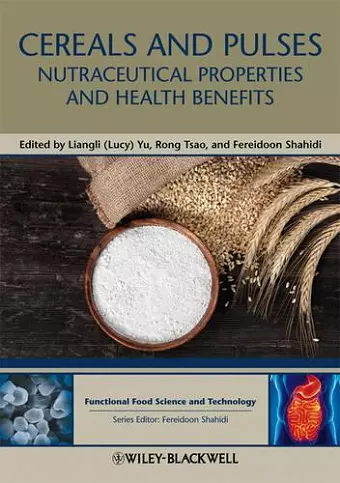Cereals and Pulses
Nutraceutical Properties and Health Benefits
Fereidoon Shahidi editor Liangli L Yu editor Rong Tsao editor
Format:Hardback
Publisher:John Wiley and Sons Ltd
Published:16th Mar '12
Currently unavailable, and unfortunately no date known when it will be back

Cereal and pulse crops are staple foods that provide essential nutrients to many populations of the world. Traditionally, whole grains were consumed but most current foods are derived from refined fractions of cereal and pulse crops. Consumption of processed or refined products may reduce the health benefits of food. In wheat-based processed foods, for example, the removed 40% of the grain (mainly the bran and the germ of the wheat grain) contains the majority of the health beneficial components. These components, particularly non-essential phytochemicals such as carotenoids, polyphenols, phytosterols/ stanols, and dietary fibers, have been shown to reduce the risk of major chronic diseases of humans, such as cancer, cardiovascular diseases, and Parkinson’s disease.
Such bioactives are therefore good candidates for ingredients of nutraceuticals and functional foods. There are many factors that can affect the bioactive content of cereal and pulse-based food ingredients, including genetics, growing and storage conditions, post-harvest treatments, food formulation and processing. All of these factors ultimately affect human health and wellness. Bioavailability is also important for these compounds for exerting their protective roles.
Cereals and Pulses: Nutraceutical Properties and Health Benefits provides a summary of current research findings related to phytochemical composition and properties of cereal and pulse crops. The nutraceutical properties of each major cereal and pulse are discussed. Coverage of cereals and pulse crops includes barley, oats, rice, rye, corn, adlay, wheat, buckwheat, psyllium, sorghum, millet, common beans, field peas, faba beans, chickpea, lentil and soybeans. Chapters for each crop discuss methods to improve crop utilization, nutraceutical components and properties, bioactive compositions, antioxidant properties, beneficial health effects, disease prevention activities, and areas for future research. Also included are two chapters that examine the beneficial health properties of dietary fibers and antioxidants. Edited and written by an international team of respected researchers, this book is a reference guide for scientists working in food ingredients, food product research and development, functional foods and nutraceuticals, crop breeding and genetics, human nutrition, post-harvest treatment and processing of cereal grains and pulses. It will enable them to effect value-added food innovation for health promotion and disease risk reduction.
“Recommended. Graduate students, researchers/faculty, and professionals/practitioners.” (Choice, 1 December 2012)
ISBN: 9780813818399
Dimensions: 253mm x 182mm x 20mm
Weight: 803g
328 pages